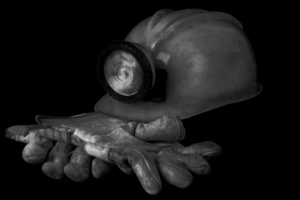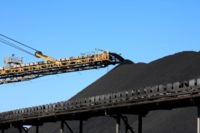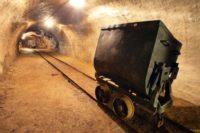 The Mine Safety and Health Administration (MSHA) says the 155 citations and two orders issued by federal inspectors during last month's special impact inspections represent the lowest number of orders issued during targeted monthly inspections over nearly three years.
The Mine Safety and Health Administration (MSHA) says the 155 citations and two orders issued by federal inspectors during last month's special impact inspections represent the lowest number of orders issued during targeted monthly inspections over nearly three years.
The inspections were conducted at eight coal mines and four metal/nonmetal mines.
The special impact inspections, which began in force in April 2010 following the explosion at the Upper Big Branch Mine, involve mines that merit increased agency attention and enforcement due to their poor compliance history or particular compliance concerns. These matters include high numbers of violations or closure orders; frequent hazard complaints or hotline calls; plan compliance issues; inadequate workplace examinations; a high number of accidents, injuries or illnesses; fatalities; adverse conditions such as increased methane liberation, faulty roof conditions and inadequate ventilation; and respirable dust.
Fewer chronic violators
"While I say this with a word of caution, the results of the latest impact inspections are part of a positive trend in overall mine safety and health compliance that includes reductions in the number of chronic violators and all-time low fatal and injury rates," said Joseph A. Main, assistant secretary of labor for mine safety and health. "We believe that impact inspections, pattern of violation actions and other measures, as well as efforts by the mining industry, are contributing factors. However, there is more to be done, and there are those who still don't take responsibility for the safety and health of the miners they employ."
As an example from last month, MSHA conducted an impact inspection March 3-7 at Robinson Nevada Mining Co.'s Robinson Operation, a large surface copper mine in White Pine County, Nev. As a result, inspectors issued 32 citations. The impact inspection was the second conducted at this operation.
Hazards still do exist
Some of the conditions cited during this latest inspection include failure to keep areas free of hazards that could result in miners suffering injuries from slips, trips or falls. For instance, a coiled-up cable from a welding machine, along with 2- to 3 feet of material, impeded travel in a walkway. Additionally, 2- to 3 inches of inches of water had collected in the sump area. Two citations were issued for failure to correct dangerous conditions at the filter crusher, and a starter cabinet had oil-soaked fuses and contactors, creating a fire hazard. At the welding shop, the ground prong of an extension cord was broken off, exposing miners to electrical hazards.
Further, two citations were issued for not maintaining brakes in functional condition on two maintenance trucks. Inspectors found that a 3,200-gallon fuel truck was leaking a large amount of diesel fuel, creating the potential for a fire or explosion. A citation was issued for not performing a pre-shift inspection on a truck before placing it in operation. Inspectors found that the backup alarm was not functional, the fire extinguisher had discharged, and the operator was not wearing his seat belt. Other citations were issued for failure to: identify power switches, provide adequate circuit overload protection, set the parking brake on an unattended truck, properly store hazardous materials and maintain a fire alarm system in working order.
Since April 2010, MSHA has conducted 591 impact inspections and issued 10,191 citations, 948 orders and 43 safeguards.



